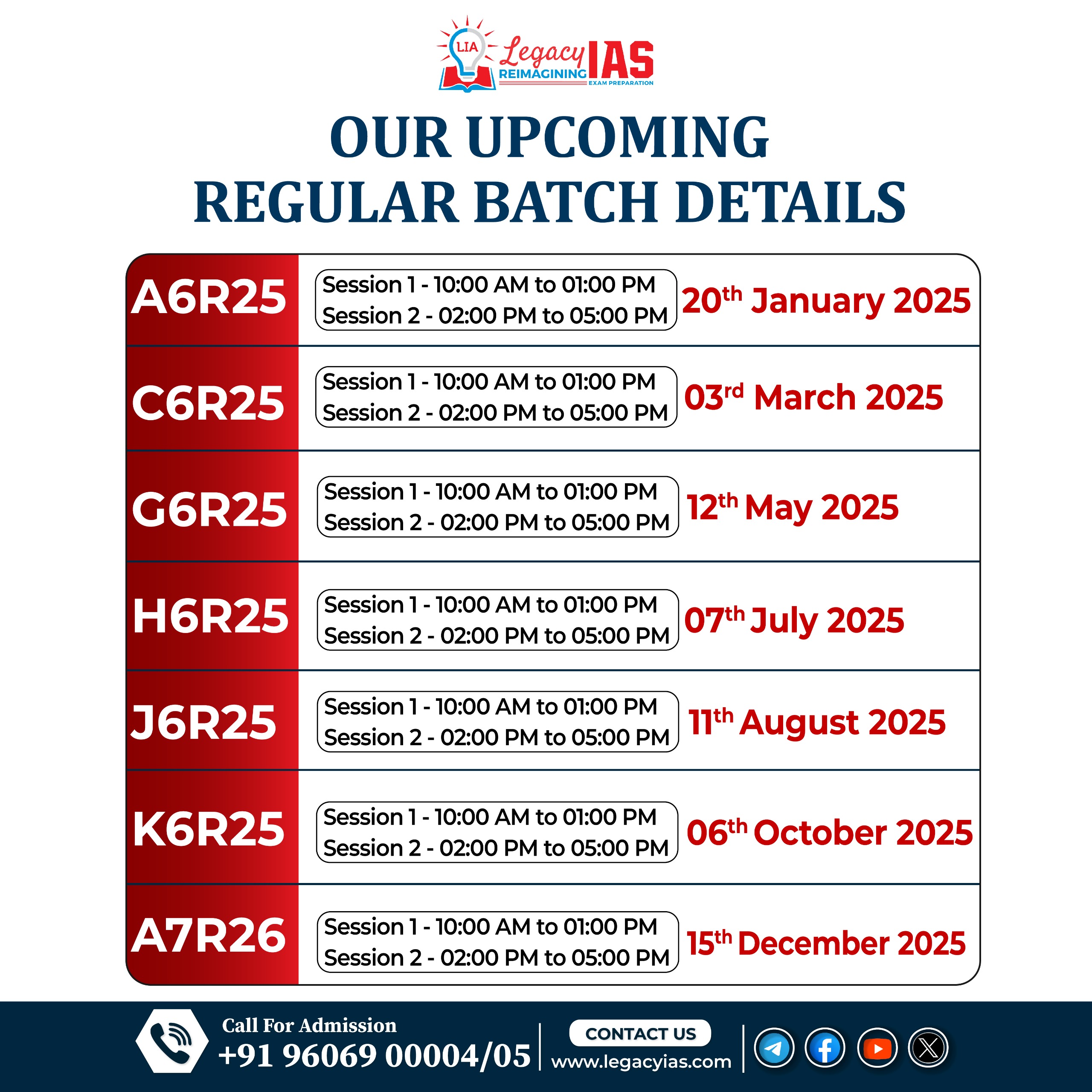Editorials/Opinions Analysis For UPSC 03 July 2023
Contents
- India and Egypt Improved Relations: A Closer Look
- Dismissing Ministers: Preserving the Federal Framework
India and Egypt Improved Relations: A Closer Look
Context
With 12% of world trade passing through the Suez Canal, Egypt is a large West Asian nation with a vital geostrategic location. It has bilateral trade agreements with important countries in West Asia and Africa and acts as India’s gateway to Europe and Africa.
Relevance
GS Paper 2 – International Relations
Mains Question
Examine the origins and development of India-Egypt relations throughout history, including significant turning points like the Friendship Treaty and their participation in the Non-Aligned Movement and South-South Cooperation. Examine the effect that these connections from the past have had on the bilateral ties that exist today between Egypt and India. (250 Words)
Upgraded Partnership
India and Egypt’s recent promotion to a Strategic Partnership represents a long-overdue action that recognises their historical links and boosts India’s engagement with the West Asia-North Africa (WANA) region. With agreements covering agriculture, archaeology and antiquities, and competition law, the two nations hope to increase collaboration in industries including green energy, pharmaceuticals, and defence.
Ancient Times: Historical Analysis of India-Egypt Relations
- Trade contacts between these historic civilizations along the Nile and Indus rivers are where India’s relationship with Egypt first began.
- During the Cold War, India and Egypt both shared the goal to avoid forming alliances with either the United States or the Soviet Union. The Non-Aligned Movement was established in 1955 by Jawaharlal Nehru of India and Gamal Abdel Nasser of Egypt. During the 1956 War, Nehru’s support for Egypt was so strong that he even threatened to have India leave the British Commonwealth.
- South-South Cooperation: Egypt and India were key players in the G-77 organisation and activities promoting “South-South Cooperation.”
South-South Cooperation: What is it?
- The level of development is used to categorise the nations of the world. As a result, there are developed and wealthy nations, developing nations, and lastly Least Developed Nations. Developing and Least Developed Countries (LDCs) are found in the Southern Hemisphere of the world, while developed nations are found in the Northern Hemisphere, if we look closely. This geographic feature has led scholars to refer to rich nations as the “North” and developing nations and LDCs as the “South.”
- As a result, South-South Cooperation or Dialogue is referred to as when developing nations or countries in the South work together in a variety of disciplines. The process of cooperation among emerging nations in the economy and other sectors is hence referred to as “South-South cooperation.” Developing nations currently advocate South-South Cooperation as a workable plan for their growth and development.
- On the other hand, North-South discourse refers to collaboration and communication between the developed North and the developing South. The Non-Aligned Movement has selected the South-South Cooperation as the fundamental tenet of its economic strategy to realise the objective of collective self-reliance among developing nations. Although the phrase South-South Cooperation first appeared in the 1970s, the concept has long been on the NAM’s agenda. It is also a cornerstone of India’s economic diplomacy with regard to LDCs and developing nations.
Bilateral Relations & Friendship Agreement:
- India and Egypt signed a historic Friendship Treaty in 1955, significantly solidifying their connection during the 1950s. Regular high-level meetings and engagements between the two countries have recently given these historically close bilateral ties fresh life.
- Trade & Commerce: India has long-standing business ties with Egypt in Africa. Based on the Most Favoured Nation provision, the India-Egypt Bilateral Trade Agreement has been in force since March 1978. Raw cotton, fertilisers, oil products, chemicals, leather, and iron goods are a few notable Egyptian exports to India. In addition to lentils, India also sends cotton yarn, sesame, coffee, spices, and tobacco to Egypt. India also sends Egypt mineral gasoline, auto parts, ships, boats, electrical equipment, and spare parts.
Possibilities Between Egypt and India:
- India has identified the Gulf region as a key player in the region due to its moderate stance on religion, strong ties with the UAE (United Arab Emirates), and Saudi Arabia (which has made significant investments in Egypt). India aims to combat religious extremism by supporting moderate countries in the region and promoting social reforms.
- With the Suez Canal, through which 12% of global trade passes, Egypt is strategically located, and India seeks to promote its regional objectives by strengthening bilateral ties with Egypt.
- More than 50 Indian companies have invested more than USD 3.15 billion in Egypt. Egypt is looking for investments in infrastructure, including metro projects in Cairo and Alexandria, a Suez Canal economic zone, a second Suez Canal channel, and a new administrative capital in a Cairo suburb.
Similar socioeconomic conditions
- Similar socioeconomic conditions exist in Egypt, a big country with a 378 billion USD economy and 105 million people. Egypt’s main imports include refined petroleum, wheat (the world’s top importer), vehicles, maize and pharmaceuticals, all of which India has the capacity to deliver.
- Construction of New Cairo (USD 58 billion), a nuclear power plant (USD 25 billion), and a high-speed rail network (USD 23 billion) are just a few of the 49 megaprojects on the Egyptian government’s ambitious agenda for infrastructure development.
- From 2015 to 2019, Egypt was the third-largest arms importer in the world. These offer India opportunities.
- Cooperation in the technical and scientific fields: The development of bilateral ties has been significantly aided by technical assistance and cooperation. The Indian Council of Agricultural Research (ICAR) and the Agricultural Research Centre of the Ministry of Agriculture & Land of Egypt signed an MoU for cooperation in agricultural research in 1998. Egyptian candidates participate in the Indian Technical and Economic Cooperation Programme (ITEC).
- India and Egypt share a number of cultural similarities, which led to the establishment of the Maulana Azad Centre for Indian Culture (MACIC) in Cairo in 1992. MACIC promotes Indian culture through hosting cultural events, teaching Hindi, Urdu, and yoga, and showing Indian films. The annual “India by the Nile” event, sponsored by the Egyptian Ministry of Culture and the Indian Council for Cultural Relations (ICCR), honours Indian traditional and modern performing and visual arts, cuisine, and popular culture in Egypt.
- A month-long air force exercise, a visit from the head of the Egyptian air force to India, and other events have all contributed to the restoration of the defence collaboration between Egypt and India.
Recent Developments
- Attitudes on the Ukraine War: India and Egypt have recently adopted attitudes on the Ukraine War that are similar to one another, abstaining from criticising Russia’s conduct while still advocating for a diplomatic settlement.
- India’s move to send wheat to Egypt, a big importer of wheat who was affected by Russian and Ukrainian export bans, was praised by Cairo and improved relations between the two nations.
- Egypt’s Highest State Honour: Prime Minister Narendra Modi received “The Order of The Nile,” Egypt’s highest state honour, during President El-Sisi’s visit to India as the chief guest for India’s Republic Day. This coveted prize honours individuals who have contributed significantly to Egypt or humanity.
Way Forward
India and Egypt are developing a tighter relationship that puts a priority on future economies and independent foreign policies, bolstered by their historical ties and inspired by present geopolitical factors.
Dismissing Ministers: Preserving the Federal Framework
Context
A discussion over the constitutional authority of governors and their potential effects on state governments has been spurred by the recent firing and then reinstatement of a Minister in the Council of Ministers of Tamil Nadu by Governor R.N. Ravi. This article questions whether Governors can fire specific Ministers without the Chief Minister’s approval and makes the case that doing so could jeopardise the constitutional framework and the federal government.
Reference
GS Paper 2 – Governor
Mains Question
Describe the constitutional authority that Indian governors have to select and remove ministers from state governments. Consider the probable repercussions for the federal structure and constitutional framework if Governors dismiss Ministers without the Chief Minister’s recommendation. (150 words)
The Authority of Governors to Fire Ministers
- According to Article 164 of the Constitution, the Governor appoints the Chief Minister, however the appointment of each Minister is based on the Chief Minister’s recommendation.
- This suggests that the Governor must seek the Chief Minister’s advice before dismissing a Minister and that the Governor cannot appoint a Minister at their own discretion.
- The Chief Minister, who is answerable to the people, has the authority to select and remove Ministers. The Governor is not given the ability to use this discretion under the Constitution.
Constitutional Rules Regulating the Function of Governors
- Part VI of the Indian Constitution contains the clauses governing the nomination and authority of governors in India. Each state is required under Article 153 to have a governor, and one individual may be appointed as the governor of two or more states.
- The governor performs two roles: he or she represents the President while also acting as the state’s legal head of state. By serving as a liaison between the federal and state governments, this role is essential to preserving the federal framework of the Indian polity.
- Articles 157 and 158 of the Constitution specify the qualifications for holding the office of governor.
- Typically, the term of office for a governor is five years. The requirements include being an Indian citizen, being at least 35 years old, not being a member of either house of parliament or state legislature, and not holding any position of profit. The period, however, may end earlier if certain conditions are met.
- A governor may be removed by the President on the advice of the prime minister-led cabinet. The President is required to remove a governor if their activities are found to be unlawful and malafide by the courts; it is vital to remember that removal without a good cause is not permissible.
- The role of governors is crucial in sustaining the ideas of federalism and ensuring the efficient operation of state governments. Governors also have the power to resign from their office. They contribute to the overall governance of the nation by playing a critical role in preserving a cordial relationship between the federal government and the states.
Historical Overview: 1935’s Government of India Act
- The Government of India Act, 1935 examination sheds more light on this issue. In accordance with Section 51(1) of the Act, “the Governor’s Ministers shall be chosen and summoned by him, shall be sworn as members of the council, and shall hold office during his pleasure.” According to this paragraph, Ministers are appointed by the Governor and work at their discretion. Section 51’s Subsection 5 further confirms that the Governor has discretion in selecting, dismissing, and setting Ministers’ pay.
- Two important facts are drawn from the terms of the Government of India Act, 1935: Ministers are chosen by the Governor, and the Governor has the authority to remove them. During colonial control, this method permitted arbitrary hiring and firing.
As a constitutional head, the governor
- The recent actions of the governor of Tamil Nadu point to a misinterpretation of the authority granted to governors in independent India. In India’s constitutional framework, governors are merely symbolic figures who can only take action on the suggestion of the Chief Minister-led Council of Ministers.
- Governors are expressly denied independent executive powers under the Indian Constitution, according to B.R. Ambedkar, a significant contributor to its writing. As a result, the Governor no longer has power over the appointment or removal of Ministers. The Chief Minister has the power to select a Minister and make a recommendation for their dismissal.
Getting to know the “Pleasure Doctrine”
Although the Government of India Act, 1935, which established the pleasure doctrine, is incorporated into Article 164 of the Indian Constitution, it should be observed that the words “chosen,” “dismissal,” and “discretion” were left out of the text. This omission shows that the Constitution does not provide the Governor any latitude in appointing or removing certain Ministers.
Judicial Explanation
Through a number of cases, the Indian Supreme Court has clarified the role of governors within the framework of the constitution. In the Shamsher Singh and Nabam Rebia instances, the court determined that Governors can only utilise their official constitutional powers as stated in Article 163(1), and only on the recommendation of their Ministers. Additionally, the court nullified earlier rulings that gave Governors unrestricted jurisdiction under Article 164.
Conclusion
It is unconstitutional for the Governor of Tamil Nadu to remove a Minister without consulting the Chief Minister. Such activities have the potential to undermine the constitutional order and cast doubt on the stability of state administrations. The problem of firing a Minister without the Chief Minister’s consent remains a threat to the constitutional system, despite reports that the Governor later stayed the dismissal order for legal opinion.




